This post will contain some spoilers for
My Hero Academia
Plus Ultra, Fantasy and Fiction fans!
Season five of My Hero Academia is well underway, with Japanese voice actors beginning recording in May1 and soundtrack composing and recording beginning in July.2 That can only mean one thing—
It’s time to talk about My Hero Academia.
Last time on Fantasy and Fiction!
Ranked among the top five most popular manga in Shonen Jump magazine eleven out of the past fourteen weeks (April-July 20th),3 My Hero Academia is among the most well-known and beloved properties in Japan and the West. But after the anime had a strong start in seasons one and two, season three left me with mixed feelings, offering some of the best and worst moments of the show to date.
So did season four rise to the occasion and come out stronger? Or was it doomed to repeat the same mistakes as season three?
Forgotten Side-Cast Rediscovered!
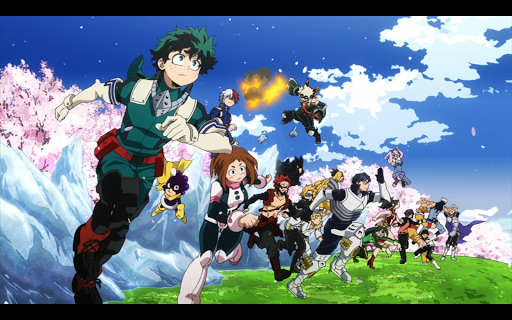 |
| Class 1-A in its entirety / Funimation 2016-2020 |
Season four sought to remedy this situation, returning focus back to the whole of Class 1-A rather than just its star pupils. Though many episodes do feature Izuku rather prominently, this season takes time to feature the other students’ backstories and their internship adventures. Kirishima in particular (my favorite goodboi) gets quite a bit of spotlight not only during his internship but also during a multi-episode arc where a large alliance of heroes rescue a young girl named Eri from a group of Yakuza (organized Japanese crime) villains led by season big bad Overhaul.
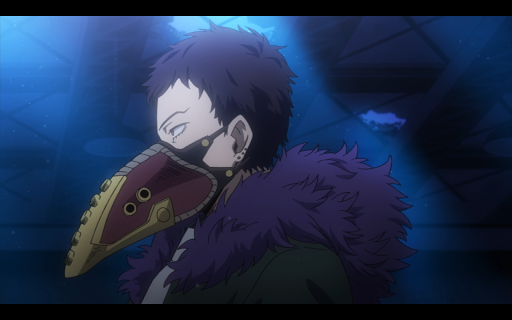 |
| Funimation 2016-2020 |
The latter half of season four also boasts lots of sweet moments as the supporting cast works together to put on a concert for the school festival. Each character gets to contribute (even generally quiet members of the cast like the painfully shy Koda) and show off something unique about themselves during the planning and performance. It’s always fun to get to see the whole class working together, and this was a refreshing return to form for the show.
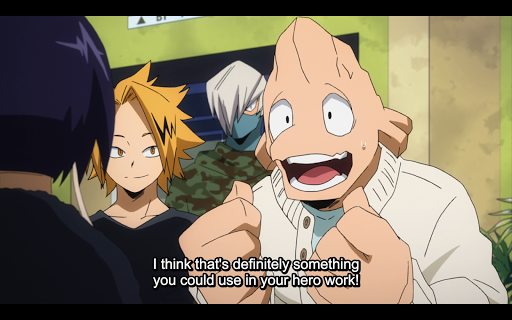 |
| Funimation 2016-2020 |
Spending more time with the side-cast meant time spent on the big three—Izuku, Bakugo, and Todoroki—felt much more balanced.
Bakugo may not get the spotlight as much as in prior seasons, but this is mainly due to his far more reserved temperment. It’s clear Bakugo is mellowing out a bit and beginning to internalize the recent challenges he’s faced: being captured by villains, struggling with feeling responsible for All Might’s retirement, and failing the Provisional License Exam. While Bakugo fans may feel disappointed that he’s taken a backseat this season, it was refreshing to see him beginning to grow as a character, becoming far more of a motivational leader rather than a volcano of anger. I’m sure we’ll be seeing more of him in season five.
Similar to Bakugo, Todoroki gets far less screen time than the prior season, but still appears enough to display how much he’s growing as a character. Being forced to participate in remedial courses alongside Bakugo to retake the Provisional License Exam forces Todoroki to team up with characters he hasn’t often gotten to work with, which is always a refreshing sight. In addition to forcing Todoroki to operate even more as a team player, we also get to see some hints of his shifting relationships with his family, especially his parents. No spoilers here, but Todoroki’s reaction to some news about his father makes for one of the most emotionally powerful scenes in the show so far.
Proving what an incredible balancing act My Hero can be, the story manages to focus on the side-cast and develop important secondary characters while showing protagonist Izuku’s ongoing growth in skill and confidence. Izuku faces a medley of challenges that push him in every aspect, from working to earn the respect of a hero who is overtly biased against him, facing his deepest insecurities, learning to cope with and learn from failure, and facing down villains when no one else can. It’s always a blast to see Izuku’s continued development as a person and a hero.
Pacing Progression Proceeds Apace?!
One of my primary complaints about the prior season’s pacing involved the surplus of characters that ground the Provisional License Exam arc to a halt. While season four’s pacing was markedly improved over season three, it did have its bumpy spots.
Unsurprisingly, my biggest frustration with season four’s pacing involved Provisional License Exam characters. While some of the characters introduced during the License Exam were charming, none of these made a reappearance. Instead it feels like they took all the new characters I didn’t like and threw them into the worst B-plot of season four.
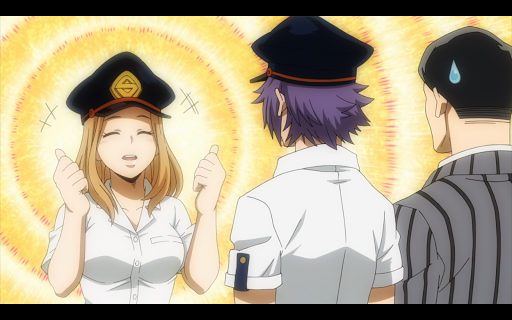 |
| Funimation 2016-2020 |
(Really, I disliked the remedial class mini-arc so much, I took a multi-month hiatus from watching the show due to lost interest.)
Season four introduced even more characters in an already large cast, and while it didn’t handle them perfectly (honestly, I’ve only seen one show do that well), season four did manage to balance its swelling cast much better than season three. Whereas the Provisional License Exam had me frequently asking, “Who is this, and why should I care about them,” season four spent more time developing the new characters so they could endear themselves to the viewer.
The assault on Overhaul’s base does take a few episodes too many, forcing the viewer to wait an unreasonable amount of time to finally get to Izuku and his upperclassman Mirio’s clash with Overhaul. But at least I cared about most of the heroes who were raiding the base—rather than groaning every time they were on screen.
 |
| Like I was with Seiji here. / Funimation 2016-2020 |
Season four’s greatest strength was how much it showcased My Hero’s villains. These fantastic characters got sidelined during the latter half of season three, so to be able to learn more about Overhaul and see Tomura and the League of Villains in action was such a treat. Tomura and Overhaul have some fascinating back-and-forth and a clash that had me gasping in shock. Given how little we’ve seen of Tomura (especially lately), it was incredibly satisfying to see him showing off what a clever—and distinctly brutal—villain he’s becoming.
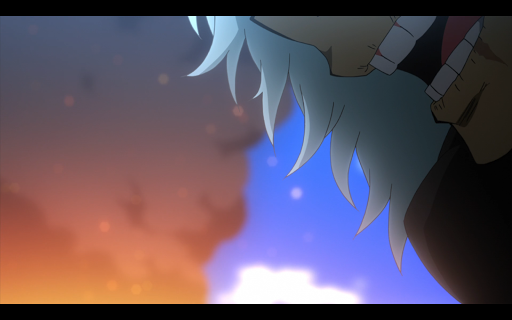 |
| Funimation 2016-2020 |
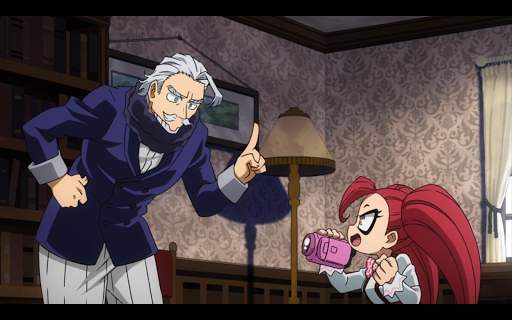 |
| Funimation 2016-2020 |
Really, saving young Eri’s life during the first half of the season felt just as important as preserving the school festival so Izuku could see her smile. Having Eri tie together the first and second halves of the season really helped season four feel cohesive in a way that season three did not. The amount of build-up to find and rescue Eri also helped generate tons of sympathy for and investment in her, allowing the calmer second half of season four to still feel important.
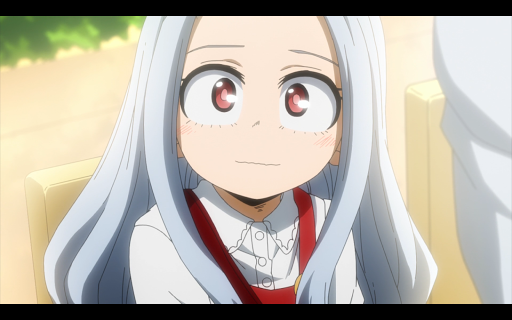 |
| Funimation 2016-2020 |
Solid Combat Gives Reason to Celebrate
While season four’s fights can’t be compared to the show-stopping duels between All Might and All For One or Bakugo and Izuku, the battles don’t disappoint, either. The build-up to Overhaul’s battle and the sheer number of heroes it takes to bring him down are impressive but not unrealistic given his abilities. And Izuku’s fight with Gentle is just as creative and fun with stakes as motivating as any battle he’s faced so far.
 |
| Funimation 2016-2020 |
In addition, the last fight of the season bursts onto the screen with some gorgeous animation, reminding me of some of the best moments of One Punch Man.
Trouble! Lackluster Payoffs Persist!
All that being said, season four does highlight how My Hero Academia as a whole continues to baffle when it comes to payoff.
It’s not as if this show doesn’t have good payoffs. It does. Each season has had its great moments: Izuku making it into UA, his exceptional performance in the Sports Festival, Izuku singlehandedly protecting a child from the bloodthirsty Muscles, All Might taking down All For One, and Izuku performing a key role in rescuing Eri from Overhaul.
Season four in particular showcased one of the most shocking moments in the show to date: one of the heroes—a relatively important one, even—dies during Eri’s rescue. I was so stunned, I looked up whether the character was actually dead or not, sure he’d be resurrected somehow later in the manga. But no, the character was really and truly dead. Seeing the students attend his funeral was sobering and quite moving.
This. More of this, please. The show is desperately in need of more daring storytelling of this intensity.
Unfortunately, season four isn’t without its lack of consequences. Mirio undergoes a dramatic experience that’s hinted it will be erased later in the series. And characters that have equally life-threatening experiences walk away injured but otherwise untouched by the narrative. Given how little Izuku’s or Iida’s injuries have affected them in the past, I somehow doubt these near-death experiences are going to amount to much.
This is particularly frustrating as we keep getting hints that this show could have significant impact on its characters, but it regularly refuses to do so. If left unaddressed, this could cause significant problems down the road, as characters with no consequences lead to an audience wondering why they should care when the stakes get set higher. That’s something no writer wants.
Conclusion: Season Four On the Up?
Overall, season four is solid. It does still suffer from a lack of major consequences, but it definitely improved on the flaws I noticed in season three.
The side characters were given more room to breathe. While some characters (namely Iida) still feel a bit flat due to their lack of character growth, other characters were given much more backstory and growth. Mirio in particular must now cope with incredible losses that will force him to, in many ways, start from scratch when he had already worked so hard to master a quirk that seemed impossible to use.
 |
| Funimation 2016-2020 |
This show is at its best when there are real consequences to characters’ actions and when the characters don’t always get what they want without struggle, sacrifice, and hard work. Izuku has had to claw his way to become the hero he is now, and it’s been a satisfying journey to watch. Seeing Eri finally begin to settle into being a normal person, safe from her abusive environment, is a treat because we saw how much pain the small child has endured. Watching All Might grow as a teacher because he’s lost his powers or Class 1-A overcoming obstacles (be they villains or class projects) is a treat because we’ve seen how far they’ve come.
I don’t know that My Hero will ever quite get over its lack of consequences, but season four proved that it’s willing to go that far sometimes. Maybe that’ll be enough to keep me on the edge of my seat for the next fight in season five.
Come on, My Hero. Let’s go Plus Ultra.
—
Notes and References:
- Nicholas Friedman, “My Hero Academia Season 5 Preps For Recording in Japan,” Funimation.com (blog), May 21, 2020, accessed July 21, 2020.
- Megan Peters, “My Hero Academia Composer Gives Update on Season 5,” ComicBook.com (blog), July 9, 2020, accessed July 21, 2020.
- “WSJ [Weekly Shonen Jump] Ranking,” reddit.com, accessed July 21, 2020.
All photos are screenshots taken from VRV.co and are the property of Funimation 2016-2020. Used under US “Fair Use” laws.
My Hero Academia and all related terms are the property of Funimation. And I am not affiliated with them.

Leave a Reply